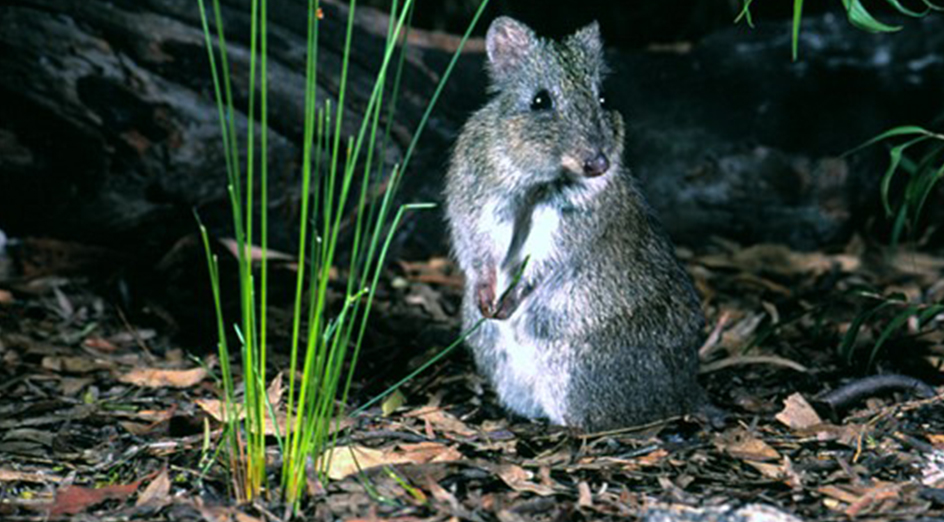Scientists have today unveiled a chromosome-length of DNA from the critically endangered Gilbert’s potoroo, believed to be Australia’s scarcest mammal and the world’s rarest marsupial.
It’s hoped the genetic data will help save the truffle-snuffling potoroo from extinction. Only around 100-to-120 of the elusive marsupials are thought to still be in existence, all living in the Great Southern region of Western Australia.
DNA mapping was carried out through DNA Zoo, a global initiative that analyses genetic data from different species of animals to help researchers, leaders and policy-makers better understand species through their genome, as well as threats to their survival.
The DNA was generated using a sample provided by the WA’s Gilbert’s Potoroo Action group (GPAG), with additional computational resources from the Pawsey Supercomputing Centre and Aiden Lab at Baylor College of Medicine in Texas.
DNA Zoo Australia Director Associate Professor Parwinder Kaur, from UWA’s School of Agriculture and Environment, said the Gilbert’s potoroo, or Ngilkat, was a nocturnal, kangaroo-like marsupial that’s slightly smaller than a rabbit with a dense coat of soft, grey-brown fur.

“It was first recorded for science in 1840 by the English naturalist John Gilbert who it was named after but by the early 1900s, the Gilbert’s potoroo was thought to be extinct,” Associate Professor Kaur said.
“Incredibly, in 1994, one small population was rediscovered at Two Peoples Bay near Albany by UWA zoology student Elizabeth Sinclair while she was researching quokkas for her PhD.
“Since then conservationists and the Department of Biodiversity, Conservation and Attractions have been working hard to ensure the species’ survival, including setting up a number of ‘safe haven’ populations over several locations.”
The job has been made more difficult by the animals’ specialist diet of truffles. The fruity bulbs of underground fungi make up 90 per cent of the Gilbert potoroo’s diet, with seeds, berries and insects accounting for the rest.
“Given the evolutionary distinctiveness of Gilbert’s potoroo and the pressing conservation need, a species-specific reference genome for Gilbert’s potoroo was urgently required,” Associate Professor Kaur said.
“The long-term goal is to increase the size of existing populations with robust identification of genetic relationships and genetic diversity for ongoing monitoring to measure the outcomes of management strategies. The availability of high-quality genomic resource will have lasting benefits for the genetic management and long-term survival of this critically endangered species.”
Photograph courtesy of Dick Walker of GPAG.
Media references
Parwinder Kaur, UWA School of Agriculture and Environment, 0421 251 091
Liz McGrath, UWA Media Advisor, 0433 795 509
